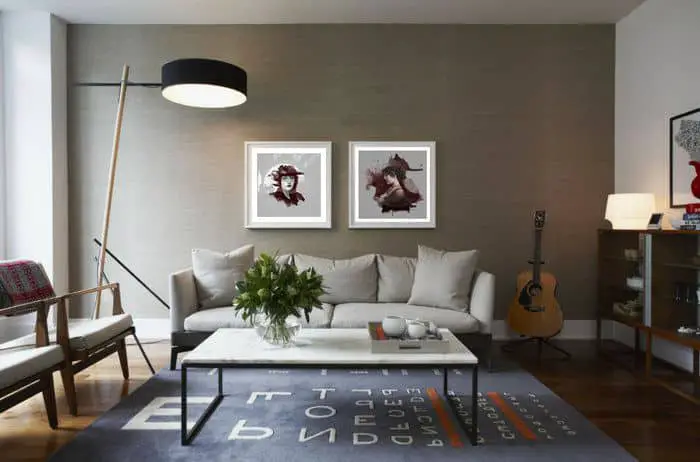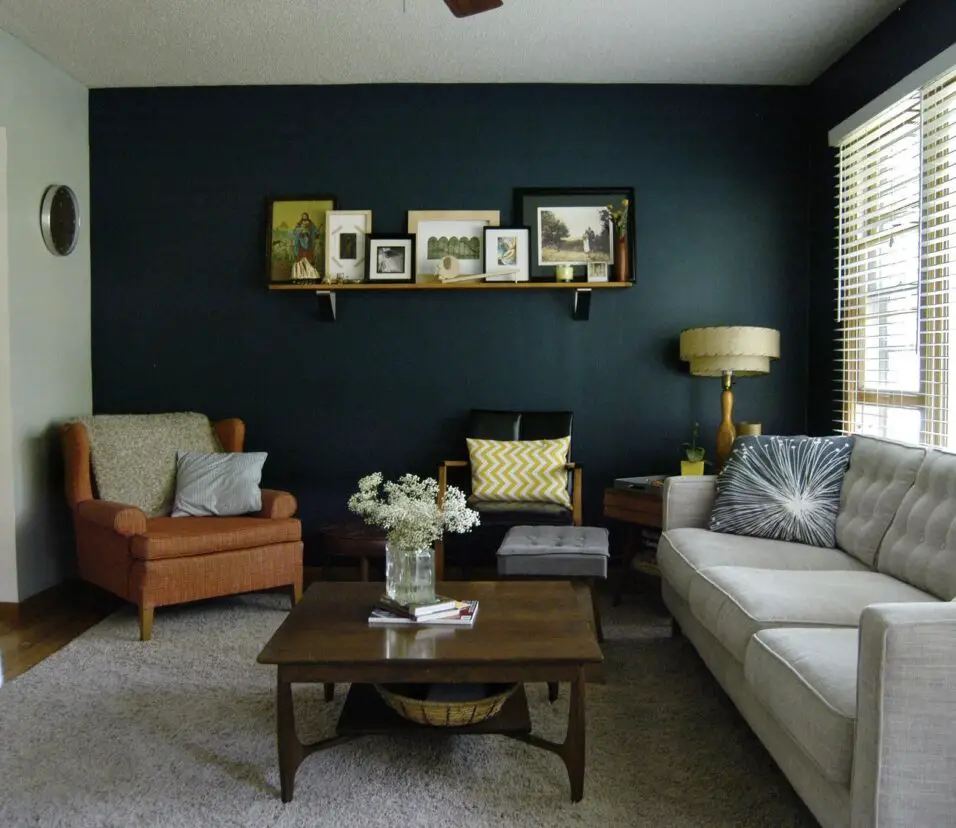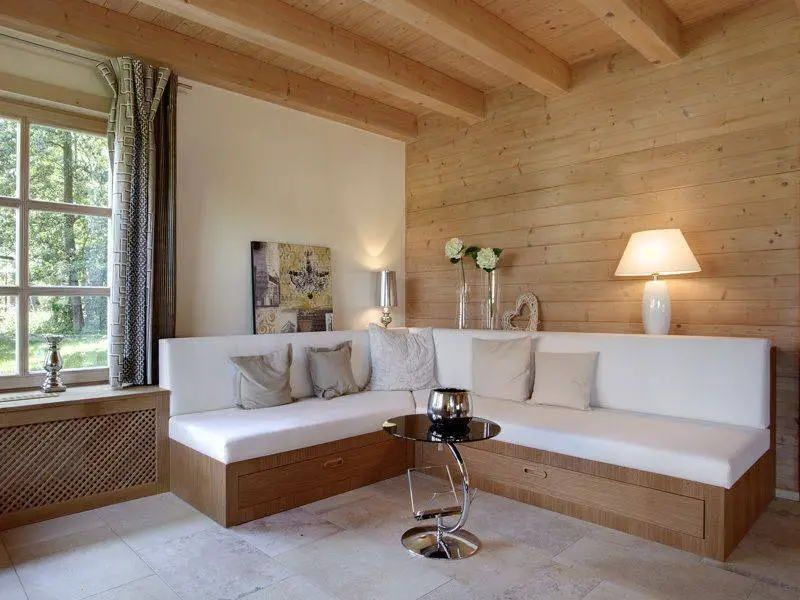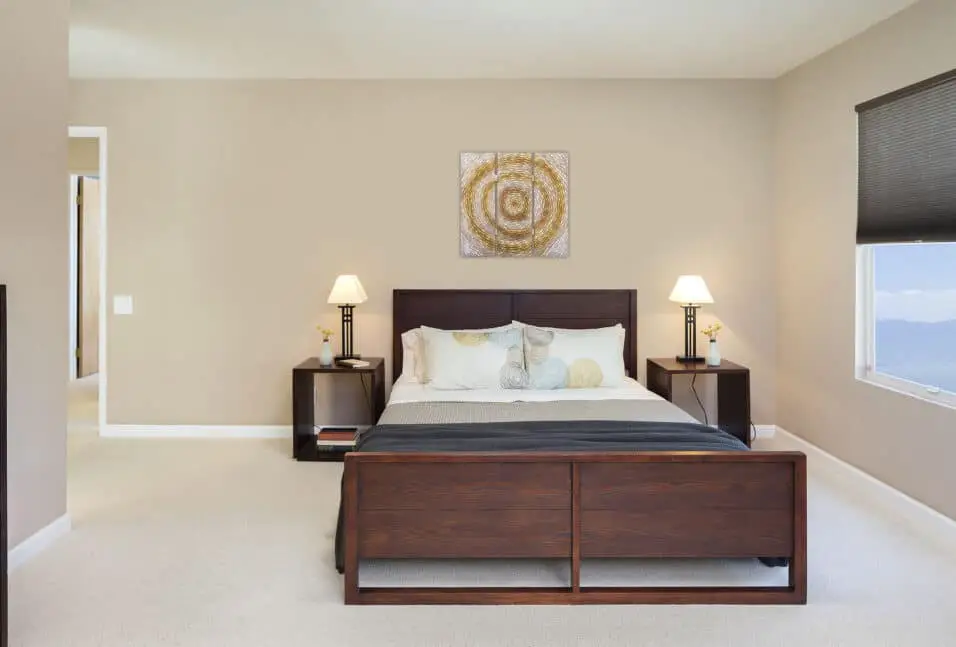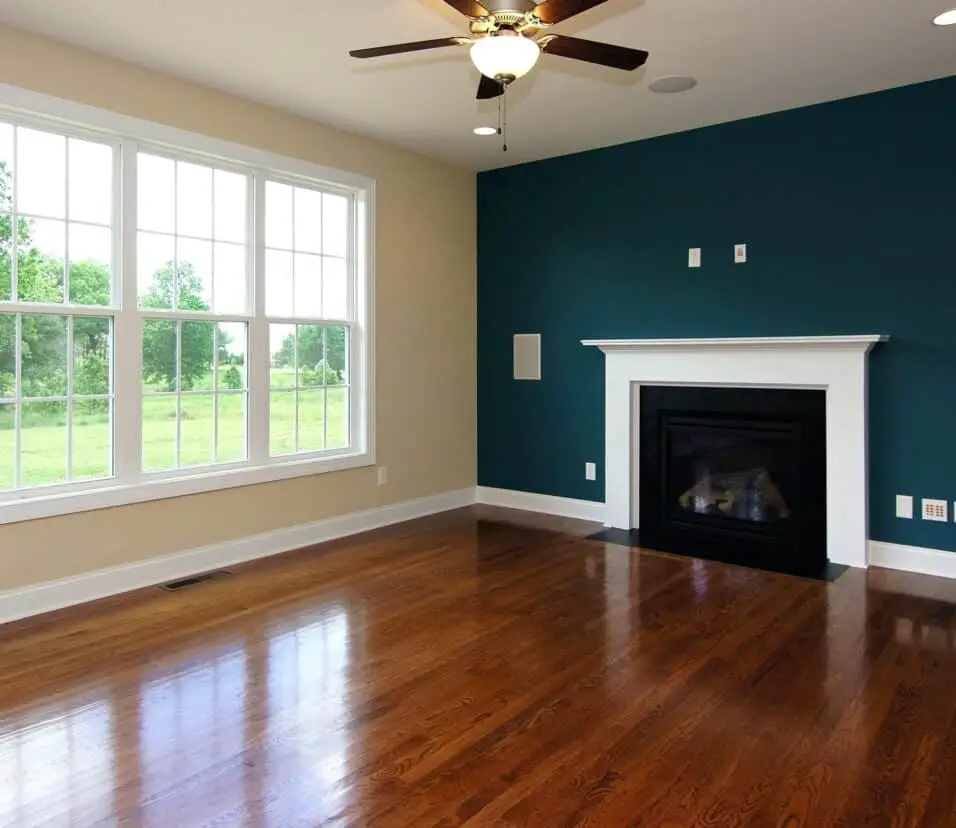How To Do A Wood Accent Wall
Introduction
How To Do A Wood Accent Wall: Wood accent walls have become increasingly popular in interior design, adding warmth, texture, and a touch of nature to any space. Whether you want to create a cozy rustic atmosphere or add a modern twist to your home, a wood accent wall can be the perfect solution. In this article, we will guide you through the process of creating a stunning wood accent wall that will transform your space into a focal point of beauty and style.
Before diving into the details of how to create a wood accent wall, it’s important to understand the benefits it can bring to your home. Wood has a timeless appeal and can instantly elevate the aesthetic of any room. It adds a sense of warmth and natural beauty that other materials simply cannot replicate. Additionally, wood accent walls can create a focal point in a space, drawing the eye and adding visual interest. Whether you choose to use reclaimed wood, shiplap, or a different type of wood paneling, the possibilities are endless when it comes to creating a unique and personalized accent wall.
When considering a wood accent wall, it’s essential to think about the overall style and theme of your space. Are you aiming for a rustic farmhouse look or a more contemporary feel? The type of wood and the installation method you choose will greatly impact the final result. For a rustic vibe, reclaimed barn wood with its weathered patina can add character and charm. On the other hand, if you prefer a sleek and modern aesthetic, a smooth and uniform wood paneling might be the better choice. It’s important to consider the existing color palette and furniture in the room to ensure that the wood accent wall complements the overall design.
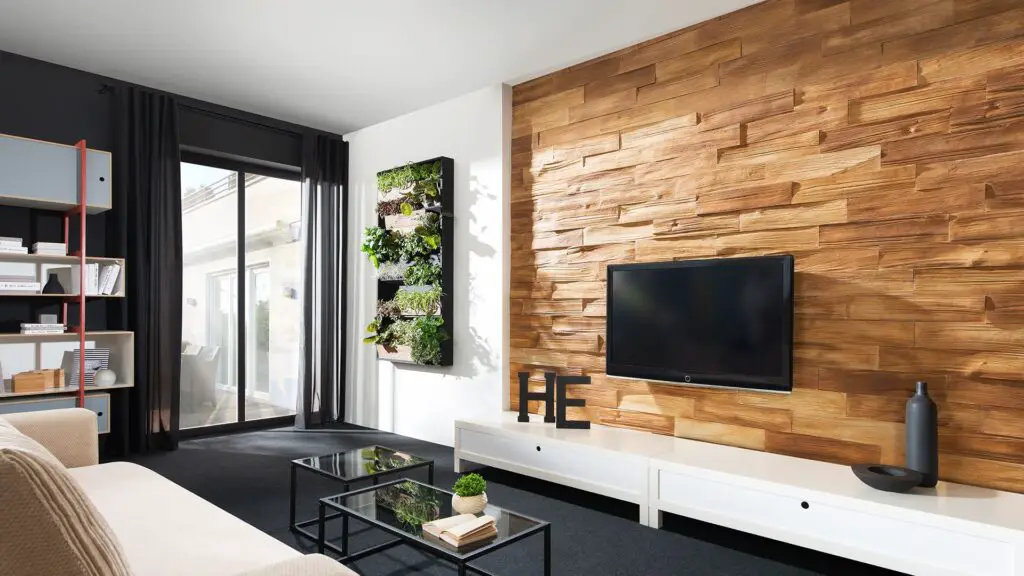
What wood do you use for an accent wall?
MDF is a super smooth engineered wood product that is often used for simple DIY projects including wood walls. Working with MDF is very similar to working with real wood and it can be cut into any size planks or other shapes just like plywood. Pros: MDF is super smooth which makes it exceptionally easy to cut.
An accent wall can add a touch of elegance and warmth to any room. It serves as a focal point, creating visual interest and enhancing the overall aesthetic appeal of the space. When it comes to choosing the right wood for an accent wall, several factors need to be considered, including the style of the room, the desired look, and the budget. Let’s explore some popular wood options that can be used to create a stunning accent wall.
Reclaimed wood:
Reclaimed wood is an excellent choice for an accent wall, as it adds character and a rustic charm to any space. This type of wood is sourced from old barns, factories, or other structures, giving it a unique and weathered appearance. Reclaimed wood can be found in various species, such as oak, pine, or cedar, each offering its own distinct characteristics. The natural imperfections, such as knots, nail holes, and saw marks, add to the authenticity and beauty of the wood.
Shiplap:
Shiplap is a popular choice for accent walls, especially in farmhouse or coastal-inspired interiors. This type of wood paneling features overlapping boards with a distinctive groove between them. Shiplap can be made from various types of wood, including pine, cedar, or even engineered wood. Its clean lines and timeless appeal make it a versatile option that can complement a wide range of interior styles.
Barn wood:
If you’re looking to create a rustic or industrial look, barn wood is an excellent choice for an accent wall. This type of wood is typically salvaged from old barns or agricultural structures, giving it a weathered and aged appearance. Barn wood often features rich patinas, rough textures, and unique grain patterns, making each piece truly one-of-a-kind. It can add warmth and character to any space, whether it’s a living room, bedroom, or even a kitchen.
Engineered wood:
For those on a tighter budget or looking for a more sustainable option, engineered wood can be a great alternative for an accent wall. Engineered wood is made by bonding together multiple layers of wood veneers, creating a durable and stable product. It can mimic the look of solid wood and is available in various finishes and styles. Engineered wood is also less prone to warping or shrinking, making it a practical choice for areas with fluctuating humidity levels.
When choosing the wood for an accent wall, it’s essential to consider the desired style, budget, and maintenance requirements. Whether you opt for the rustic charm of reclaimed wood, the clean lines of shiplap, the weathered look of barn wood, or the affordability of engineered wood, each option can create a stunning focal point that enhances the overall ambiance of your space.
Is it hard to do a wood accent wall?
Modern wood accent walls are an easy way to give your home a beautiful look while transforming any room into a cozy oasis. DIY wooden accent walls are shockingly easy to make yourself and most don’t require any kind of woodworking experience – which makes them a perfect beginner woodworking project.
Creating a wood accent wall can be a fantastic way to add warmth, texture, and visual interest to any room. Whether you are looking to enhance the cozy ambiance of a bedroom or add a touch of rustic charm to a living area, a wood accent wall can transform the overall look and feel of your space. However, many people wonder if it is hard to undertake such a project. In this article, we will explore the process of creating a wood accent wall and discuss the level of difficulty involved.
Benefits of a Wood Accent Wall:
Before delving into the difficulty level, it is important to understand the benefits of having a wood accent wall. Firstly, wood brings a natural element into your space, creating a sense of warmth and connection to nature. It can also add depth and dimension to a room, making it feel more inviting and cozy. Additionally, a wood accent wall can serve as a focal point, drawing attention and adding character to an otherwise plain space. Whether you choose reclaimed wood, shiplap, or a different type of wood paneling, the possibilities for customization are endless.
The Process of Creating a Wood Accent Wall:
Now, let’s discuss the process of creating a wood accent wall. While it may seem daunting at first, with proper planning and the right tools, it can be a manageable DIY project. The first step is to determine the type of wood you want to use and the design you envision. Next, you will need to measure the wall and calculate the amount of wood required. Once you have the materials, you will need to prepare the wall by removing any existing wallpaper or paint and ensuring it is clean and smooth.
Installation and Finishing:
After preparing the wall, you can begin the installation process. Depending on the type of wood you choose, you may need to cut the planks to size and attach them using nails, adhesive, or a combination of both. It is important to ensure that the planks are level and properly aligned to achieve a seamless look. Once the wood is installed, you can choose to leave it in its natural state or apply a finish such as stain or paint to enhance its appearance and protect it from wear and tear.
While creating a wood accent wall may require some effort and planning, it is not necessarily a difficult task. With the right materials, tools, and a bit of patience, you can successfully transform your space and enjoy the many benefits that a wood accent wall brings. So, if you are considering adding a touch of warmth and character to your room, don’t hesitate to embark on this rewarding DIY project.
How do you style a room with wood walls?
Styling a room with wood walls can create a warm and inviting atmosphere that brings nature indoors. Wood walls add a touch of rustic charm and can be a versatile backdrop for various interior design styles. Whether you prefer a modern, minimalist look or a cozy, traditional feel, there are several ways to style a room with wood walls to create a space that reflects your personal taste and style.
Consider the color and finish of the wood walls. If you want to maintain a natural and organic look, opt for a clear or light stain that allows the wood grain to shine through. This will create a sense of warmth and texture in the room. Alternatively, you can paint the wood walls in a color that complements the overall color scheme of the room. Soft neutrals like beige or gray can create a calming and timeless ambiance, while bolder colors like navy or forest green can add drama and personality.
Choose furniture and decor that complements the wood walls. When styling a room with wood walls, it’s important to strike a balance between the wood elements and other materials. If your wood walls have a lighter tone, consider incorporating darker furniture pieces to create contrast. On the other hand, if your wood walls have a darker stain, lighter furniture and decor can help brighten the space. Mixing different textures, such as leather, metal, or fabric, can also add visual interest and depth to the room.
Style a room
Proper lighting can enhance the beauty of wood walls and create a cozy ambiance. Natural light is ideal, so consider using sheer curtains or blinds that allow sunlight to filter through. Additionally, incorporate a mix of ambient, task, and accent lighting to create layers of light in the room. This will help highlight the wood walls and create a warm and inviting atmosphere.
When styling a room with wood walls, it’s important to choose flooring that complements the wood. Hardwood or laminate flooring in a similar tone can create a cohesive and harmonious look. As for accessories, consider adding plants, artwork, or decorative items that bring in pops of color and texture. These elements can help soften the wood walls and add personality to the space.
What is the rule of thumb accent wall?
Go with a color that is darker than the other walls in the room. A darker hue will contrast with the lighter walls and pull eyes straight to it, which is what you want. A good rule of thumb is to paint the accent wall the same color as the other walls, but 2 shades darker.
An accent wall is a popular design technique used to add visual interest and create a focal point in a room. It involves painting or decorating one wall in a different color or pattern than the other walls in the space. The rule of thumb for creating an accent wall is to choose a wall that stands out naturally, such as the one behind a fireplace, bed, or large piece of furniture. Every room in the house, from the living room to the bedroom and even the bathroom, can benefit from this method.
One of the main purposes of an accent wall is to draw attention to a specific area or feature in a room. By using a different color or pattern on one wall, you can create a sense of depth and dimension, making the space more visually appealing. This technique is particularly useful in rooms with high ceilings or large open spaces, as it helps to break up the monotony and add visual interest.
Thumb accent wall
When choosing a color or pattern for your accent wall, it is important to consider the overall color scheme and style of the room. The accent wall should complement the other walls and furnishings in the space, rather than clash with them. For example, if the room has a neutral color palette, you can choose a bold and vibrant color for the accent wall to create a striking contrast. On the other hand, if the room already has a lot of patterns and textures, you may want to opt for a more subtle and understated design for the accent wall.
An accent wall can be made using a variety of materials and methods, not only paint. Wallpaper, for example, can add texture and pattern to a space, while reclaimed wood or stone can bring a rustic or industrial feel. You can also use decorative techniques such as stenciling, murals, or even a gallery wall of artwork to create a unique and personalized accent wall.
Overall, the rule of thumb for creating an accent wall is to choose a wall that stands out naturally and use a color or pattern that complements the rest of the room. By following this guideline, you can create a visually appealing and cohesive space that is sure to impress. Whether you prefer a bold and vibrant accent wall or a more subtle and understated design, the possibilities are endless when it comes to adding a touch of personality and style to your home.
Are wood accent walls expensive?
Wood accent walls have become increasingly popular in interior design, adding warmth, texture, and a touch of nature to any space. However, one common concern that arises when considering this design element is the cost. Are wood accent walls expensive? The answer to this question depends on various factors, including the type of wood, the size of the wall, and the installation method. In this article, we will explore the different aspects that contribute to the cost of wood accent walls, allowing you to make an informed decision for your home or office.
Type of Wood
The type of wood you choose for your accent wall plays a significant role in determining its cost. Hardwoods such as oak, walnut, and teak are generally more expensive than softwoods like pine or cedar. Hardwoods offer durability, a rich appearance, and unique grain patterns, making them a popular choice for accent walls. On the other hand, softwoods are more affordable and can still provide a beautiful aesthetic when properly finished and maintained. Consider your budget and desired look when selecting the type of wood for your accent wall.
Size of the Wall
The size of the wall you plan to cover with wood will also impact the overall cost. Naturally, larger walls require more materials, resulting in higher expenses. Additionally, larger walls may require more labor and time for installation, which can increase the overall cost. It is essential to measure the dimensions of your wall accurately and consult with professionals to estimate the amount of wood needed and the associated costs.
Installation Method
The installation method chosen for your wood accent wall can affect the cost as well. There are various ways to install wood planks, including adhesive, nails, or tongue and groove systems. Each method has its own advantages and associated costs. Adhesive installation is generally the most affordable option, while tongue and groove systems tend to be more expensive due to their precision and time-consuming nature. Consider your budget, desired aesthetic, and the expertise required for each installation method when making your decision.
Overall, wood accent walls can range in price depending on the type of wood, the size of the wall, and the installation method. It is crucial to consider your budget, desired aesthetic, and long-term maintenance when deciding on the cost of your wood accent wall. By carefully evaluating these factors and consulting with professionals, you can create a stunning and affordable wood accent wall that enhances the beauty and ambiance of your space.
Creating a wood accent wall can add warmth and character to any space. The procedure for finishing this task is as follows:
Step 1: Planning and Preparation
Before starting, it’s important to plan out your design and gather all the necessary materials. Measure the wall area where you want to install the wood accent wall and determine the amount of wood planks needed. Consider the type of wood, color, and finish that will best complement your space.
Step 2: Wall Preparation
Prepare the wall by removing any existing wallpaper, paint, or debris. Ensure the wall is clean, smooth, and dry. If needed, apply a primer to create a suitable surface for the wood planks to adhere to.
Step 3: Cutting and Installing the Wood Planks
Measure and cut the wood planks to fit the dimensions of your wall. Use a miter saw or a circular saw to achieve precise cuts. Apply adhesive to the back of each plank and press it firmly onto the wall, starting from the bottom and working your way up. Use a level to ensure the planks are straight and even.
Step 4: Finishing Touches
Once all the boards are in place, use wood filler to conceal any nail holes or spaces between the boards. Sand the surface to achieve a smooth finish. Apply a protective sealant or stain to enhance the wood’s natural beauty and protect it from moisture or damage.
By following these steps, you can create a stunning wood accent wall that adds a touch of elegance and warmth to your space.
What materials are needed to complete a wood accent wall project?
When it comes to creating a stunning wood accent wall, you’ll need a few essential materials to bring your vision to life. The first and most important item on your list is, of course, the wood itself. Opt for high-quality, durable wood planks that suit your desired aesthetic. Popular choices include reclaimed barn wood, shiplap, or tongue and groove boards. Make sure to measure the wall accurately to determine the quantity of wood needed.
In addition to the wood, you’ll require a few other materials to ensure a successful installation. Start with a good quality adhesive or construction adhesive to secure the wood planks to the wall. Depending on the size of your project, you may also need finishing nails or a nail gun to reinforce the installation. It’s crucial to have a level on hand to ensure the planks are straight and aligned correctly. Lastly, don’t forget sandpaper or a sander to smooth out any rough edges and create a polished finish.
By using high-quality wood and the necessary materials, you can create a stunning wood accent wall that adds warmth and character to any space. Remember to plan your project carefully and gather all the required materials before starting to ensure a smooth and successful installation.
Are there any specific tools or equipment required for installing a wood accent wall?
When it comes to installing a wood accent wall, there are several specific tools and equipment that you will need to ensure a successful project. These tools are essential for achieving a professional-looking result and making the installation process easier and more efficient.
Measuring and marking tools:
To begin with, you will need a tape measure, a level, and a pencil for accurately measuring and marking the wall. This will serve as a guide for laying out the wood planks and ensuring that they are installed evenly and in a straight line.
Saw and cutting tools:
Depending on the type of wood you choose for your accent wall, you may need a circular saw, a miter saw, or a jigsaw for cutting the planks to the desired length and shape. These tools will allow you to achieve precise cuts and create a seamless look.
Nail gun or adhesive:
To secure the wood planks to the wall, you will need either a nail gun or a strong adhesive. While adhesive is fine for installing lightweight boards or as a temporary measure, a nail gun is advised for a more secure and long-lasting installation.
Level and clamps:
Throughout the installation process, a level will be crucial for ensuring that the wood planks are straight and aligned. Additionally, clamps can be useful for holding the planks in place while you secure them to the wall.
Sandpaper and finishing tools:
Sandpaper or a sander may be required after installation of the wood accent wall in order to remove any sharp edges or blemishes. To further improve the wood’s beauty and safeguard it from moisture and harm, a stain or sealant can be applied.
By having these specific tools and equipment on hand, you can confidently tackle the installation of a wood accent wall and achieve a stunning result that adds warmth and character to your space.
How long does it typically take to complete a wood accent wall installation?
When it comes to the duration of a wood accent wall installation, several factors come into play. The size of the wall, the complexity of the design, and the experience level of the installer can all impact the time it takes to complete the project. On average, however, a wood accent wall installation can typically be completed within a few days to a week.
The first step in the process is to prepare the wall by removing any existing wallpaper or paint and ensuring it is clean and smooth. The next step is to measure, cut, and ready the wood panels or boards for installation. This includes sanding, staining, or painting the wood, depending on the desired finish. When the wood is ready, you can use nails, glue, or a mixture of the two to fasten it to the wall. The finishing touch is the installation of any molding or trim.
It’s important to note that the timeline may vary depending on the complexity of the design. Intricate patterns or designs may require more time and precision during the installation process. Additionally, if the project involves multiple walls or a larger area, it may take longer to complete. Hiring a professional installer can help ensure a quicker and more efficient installation, as they have the expertise and tools to handle the job effectively.
Are there any specific tips or techniques to ensure a successful wood accent wall project?
When it comes to creating a wood accent wall, there are a few tips and techniques that can help ensure a successful project. Firstly, it is important to properly prepare the wall before installation. This includes cleaning the surface, removing any existing paint or wallpaper, and ensuring the wall is smooth and free from imperfections. This will provide a solid foundation for the wood panels and help them adhere properly.
Another important tip is to carefully plan the layout of the wood panels. Consider the size and shape of the wall, as well as any architectural features or obstacles that may need to be worked around. It can be helpful to create a mock-up or layout on the floor before installing the panels on the wall. This will allow you to visualize the final result and make any necessary adjustments before committing to the installation.
Additionally, using the right tools and techniques during installation is crucial. It is recommended to use a level and measuring tape to ensure the panels are installed straight and evenly spaced. A nail gun or adhesive can be used to secure the panels to the wall, depending on the type of wood and desired aesthetic. It is important to follow the manufacturer’s instructions and use the appropriate method for your specific project.

Conclusion
A wood accent wall can be a stunning addition to any space, adding warmth, texture, and a touch of nature to the room. Whether you are looking to create a rustic, farmhouse-inspired look or a modern, sleek design, a wood accent wall can be customized to suit your style and preferences. By following a few simple steps, you can easily transform a plain wall into a focal point that will enhance the overall aesthetic of your space.
It is important to choose the right type of wood for your accent wall. There are various options available, including reclaimed wood, pallet wood, or even pre-finished wood planks. Each type of wood will give a different look and feel to the wall, so consider the overall style you are trying to achieve. Reclaimed wood, for example, can add a rustic and weathered charm, while pre-finished wood planks offer a more polished and contemporary look.
Once you have selected the wood accent wall, the next step is to prepare the wall. This involves cleaning the surface and ensuring it is smooth and free from any imperfections. If necessary, you may need to sand the wall to create a level surface for the wood to adhere to. It is also important to measure and mark the wall to determine the layout of the wood planks. This will help ensure a symmetrical and visually pleasing result.




